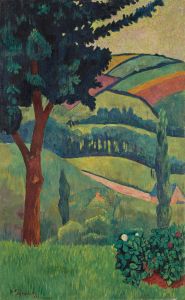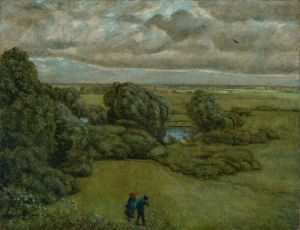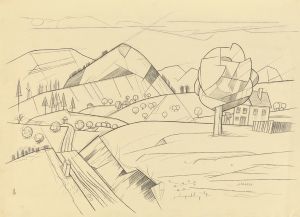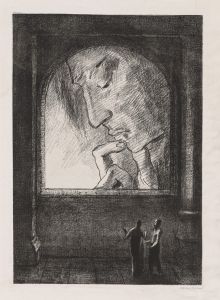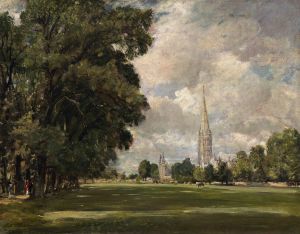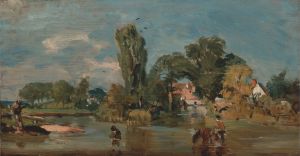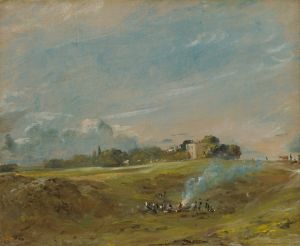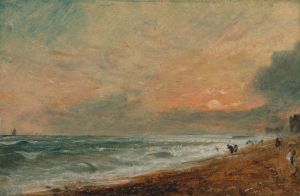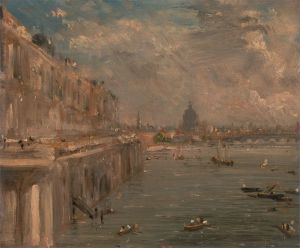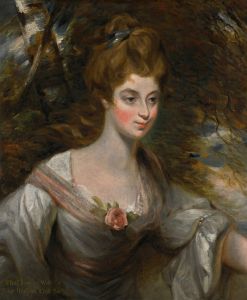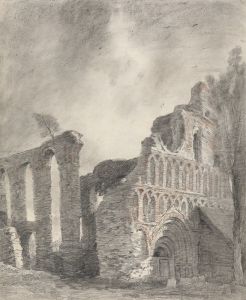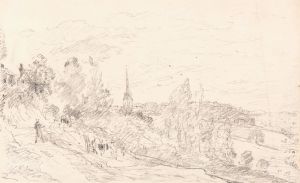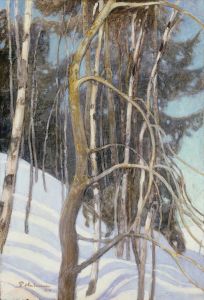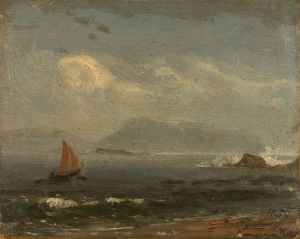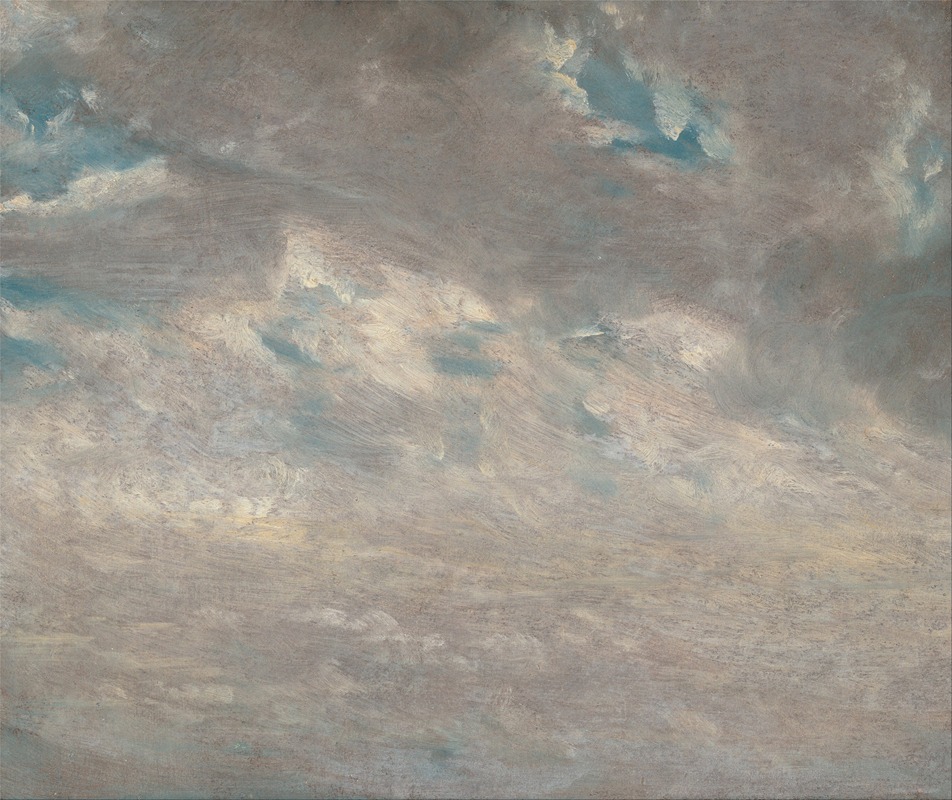
Cloud Study
A hand-painted replica of John Constable’s masterpiece Cloud Study, meticulously crafted by professional artists to capture the true essence of the original. Each piece is created with museum-quality canvas and rare mineral pigments, carefully painted by experienced artists with delicate brushstrokes and rich, layered colors to perfectly recreate the texture of the original artwork. Unlike machine-printed reproductions, this hand-painted version brings the painting to life, infused with the artist’s emotions and skill in every stroke. Whether for personal collection or home decoration, it instantly elevates the artistic atmosphere of any space.
"Cloud Study" is a series of oil sketches by the renowned English Romantic painter John Constable, created during the early 19th century. These studies are celebrated for their meticulous observation and depiction of the sky and cloud formations, reflecting Constable's deep interest in meteorology and his commitment to capturing the transient effects of light and atmosphere.
John Constable (1776-1837) is best known for his landscape paintings, particularly those depicting the English countryside. His works are characterized by their naturalistic style and attention to detail, which were revolutionary at a time when landscape painting was often idealized. Constable's "Cloud Study" series is a testament to his dedication to painting directly from nature and his innovative approach to capturing the changing weather conditions.
The "Cloud Study" sketches were primarily created between 1821 and 1822, during Constable's time in Hampstead, a village north of London. Hampstead Heath, with its expansive skies and varied weather patterns, provided the perfect setting for Constable to observe and document the sky. These studies were not intended as finished works of art but as exercises to improve his understanding of the natural world and to inform his larger compositions.
Constable's approach to these studies was methodical and scientific. He often annotated the sketches with details about the weather conditions, time of day, and other observations. This practice reflects the influence of contemporary scientific thought and the burgeoning field of meteorology. Constable's interest in the science of weather was further fueled by his friendship with Luke Howard, a pioneering meteorologist who classified cloud types. Howard's work had a significant impact on Constable, and the painter's cloud studies can be seen as a visual counterpart to Howard's scientific observations.
The "Cloud Study" series showcases Constable's mastery of oil paint and his ability to convey the ephemeral nature of clouds. He used a variety of techniques to capture the different textures and forms of clouds, from the delicate, wispy cirrus clouds to the dramatic, towering cumulus formations. The studies are characterized by their loose, expressive brushwork and subtle gradations of color, which effectively convey the movement and luminosity of the sky.
These sketches were instrumental in the development of Constable's larger landscape paintings. The knowledge and experience gained from his cloud studies allowed him to create more dynamic and atmospheric compositions. Notable works such as "The Hay Wain" and "Dedham Vale" demonstrate the influence of his cloud studies, with their richly detailed skies and convincing depictions of light and weather.
Today, Constable's "Cloud Study" sketches are highly regarded for their artistic and scientific significance. They offer a glimpse into the artist's creative process and his dedication to capturing the natural world with accuracy and sensitivity. Several of these studies are held in major art collections, including the Victoria and Albert Museum in London and the Yale Center for British Art in New Haven, Connecticut.
In summary, John Constable's "Cloud Study" series represents a pivotal moment in the history of landscape painting. These works highlight Constable's innovative approach to capturing the natural world and his contributions to both art and science. Through his meticulous observation and skillful technique, Constable succeeded in creating a body of work that continues to inspire and inform artists and scientists alike.





